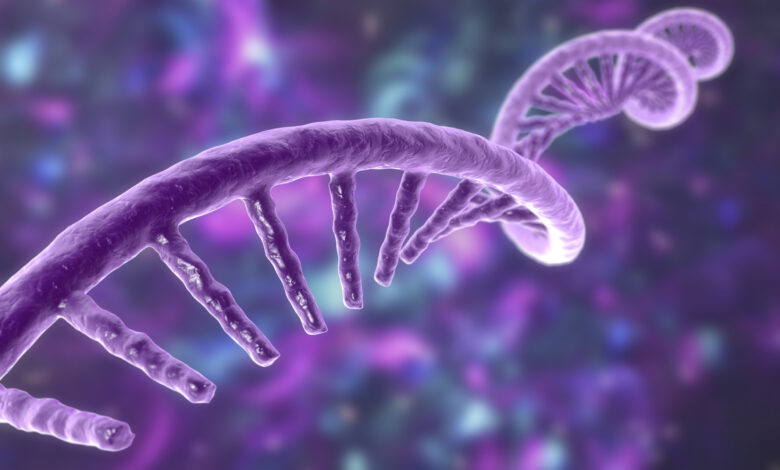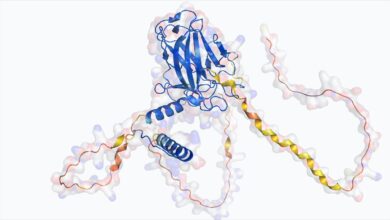
Molecular model of messenger ribonucleic acid (mRNA), computer illustration. Credit: Kateryna Kon/Science Photo Library via Getty Images
Technology The WorldWe’re One Step Closer to Recreating the Evolution of Life
Researchers have developed a method to create a system of RNA (ribonucleic acid) molecules that can partially replicate themselves, moving one step closer to replicating the first step in the origins of life.
“This was the molecule that ran biology,” says study lead author James Attwater at University College London.
RNA stores information, just like DNA (deoxyribonucleic acid), and also catalyses reactions, similar to proteins. However, creating self-replicating RNA is challenging since its double helices tend to stick together, making it difficult to keep them apart long enough to allow replication. A set of three letters, or triplets, can bind strongly enough to prevent strands from rezipping. The solution is first made acidic and warm to separate the helix, allowing the triplets to pair up. Then, the solution is made alkaline and cool. As the liquid freezes, it becomes highly concentrated, and the RNA enzyme becomes active, joining the triplets to form a new strand. So far, 30 letters of the 180-letter-long RNA enzyme have been replicated, but improving the efficiency of the enzyme can lead to complete replication.



